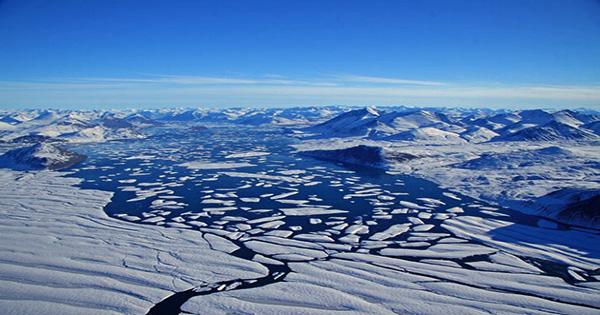While melting the ice sheet in Greenland has not already been identified as a major problem, new research has found that hassle-free ice is releasing water that dramatically enriches toxic metallic mercury.
A few uncertainties surround this research, but it highlights how the worrying climate crisis could affect the natural world and human life in previously unexpected ways. The discovery was first made when scientists sampled water from three different rivers and two fjords beside ice, hoping to gather insights into water nutrients. Unexpectedly, they discovered that water was merging with higher concentrations centered on mercury.
Behind this initial investigation, researchers led an international team of scientists to measure mercury concentrations in molten water from three glacier wetlands southwest of the Greenland ice sheet during the summer melting season. Reporting the findings in the journal Nature Geoscience this week, they discovered that the region’s molten water recorded somewhat higher record levels of mercury in natural water.
The region releases about 42 tons of dissolved mercury each year, exporting about ten percent of the global water system to the oceans. Jon Hawkings, a postdoctoral researcher at Florida State University and the German Research Centre for Geosciences, said in a statement, “Sample glaciers in southwestern Greenland have surprisingly high levels of mercury in their molten waters.” “And it now leads us to look at the whole host of other questions such as how that mercury could possibly enter the food chain.” “We didn’t expect there to be anywhere near the amount of mercury in the ice water,” added Rob Spencer, an associate professor and associate professor of Earth, Ocean and Atmospheric Sciences at Florida State University.
The source of the mercury is unknown, but researchers say it is unlikely to be the result of human industrial activity. Instead, suspect that the leaked mercury is actually derived from the Earth’s natural geochemical material, an idea that could raise some alarming possibilities. “All efforts to manage mercury in this way come from the idea that we see increasing concentrations around the world that originally came from direct ethnographic activities such as industry, but that a source of mercury from a climate-sensitive environment such as a glacier can be much more difficult to manage,” Hawkins. It remains to be seen what effect this isolated mercury may have on the wider ecosystem or even on human health. Mercury is a toxic substance that bioaccumulates in the form of the neurotoxin methylmercury in aquatic food nets.
In addition, the waters around around Greenland is due to the fact that winter-water shrimp, halibut and cod, which are exported around the world, raise concerns that melting ice in Greenland and beyond could increase the likelihood of mercury exposure to humans and the environment.
















